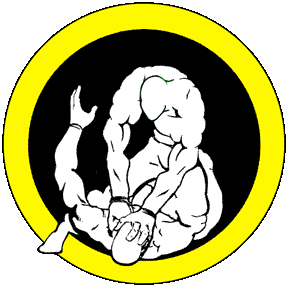MUHAMMAD ALI’S TRUNKS FROM “THE FIGHT OF THE CENTURY” AND HISTORIC LOU GEHRIG BAT FEATURED IN SCP AUCTIONS’
Posted on | October 25, 2011 | No Comments

FALL INTERNET AUCTION, OCT. 28-NOV. 19
Laguna Niguel, Calif. (Oct. 25, 2011) – The personal basketball memorabilia collection of Hall of Famer Julius “Dr. J” Erving and Muhammad Ali’s fight-worn trucks from Ali vs. Frazier – “The Fight of the Century” — highlight SCP Auctions’ spring auction set to begin Friday, Oct. 28.
Other historically-important memorabilia that make up the 763-lot offering include Lou Gehrig’s 1938-39 bat used to hit his last home run in a Yankees uniform, Mickey Cochrane’s 1934 American League Most Valuable Player trophy and the only known autographed photo of 19th Century baseball icon Mike “King” Kelly. Bidding will be open to registered bidders on Friday, Oct. 28 and conclude on Saturday, Nov. 19. For more information on how to participate, visit www.scpauctions.com or call (800) 350-2273.
“On behalf of Julius Erving and his family, we are proud to offer what is certainly the most important and comprehensive basketball player collection ever brought to market,” said SCP President and CEO David Kohler. “The collection is being offered in two parts with part one highlighting our November 19 sale. Part two of the collection will be featured in our December Monthly Auction. We share in the Erving family’s wish that fans and collectors will cherish and preserve these items as they have for many years.”
Erving left an indelible impression on the game of basketball. His dazzling style of play largely facilitated the merger between the ABAand NBA in 1976. An all-star in every season of his 16-year professional career, he was the first to bring the field of play “above the rim” and, in doing so, changed the face of the game forever. His grace and style continue to make him one of the game’s true ambassadors. The auction will include part one of the collection of basketball legend Dr. J, including significant championship rings, important awards and game-used items.
“I am very excited to work with SCP auctions to offer my personal collection of memorabilia to collectors and fans,” said Erving. “It is my hope that the buyers of these items will derive much pleasure from their ownership. I also hope these treasures initiate much discussion inside and outside of basketball circles that help to preserve my legacy. It pleases me to support my lifelong charity, the Salvation Army, with a portion of the proceeds. My family and I thank all of the fans for their continued support throughout the years.”
Some of the marquis items from the collection include Dr. J’s 1974 and 1976 New York Nets ABA World Championship ring; 1983 Philadelphia 76ers World Championship ring; 1996 NBA’s 50 Greatest Players ring; MVP trophies from 1975-76 (ABA) and 1980-81 (NBA); 1977 and 1983 NBA All-Star game MVP trophies; 1979, 1981 and 1985 Eastern Conference All-Star game-worn uniforms, 1982-83 Philadelphia 76ers game-worn road uniform; and his final game-worn jersey from Game 5 of the 1987 Eastern Conference playoffs.
Also of significance is the offering of Ali’s iconic blood-red velvet trucks worn during his first fight versus Joe Frazier. The fight was billed as the “Fight of the Century” and, in retrospect, it probably was. It may have been Ali’s best fight, despite the fact he lost for the first time in his career. He out-punched Frazier 3-1. But his braggadocio, and taunting style, coupled with the 14th-round knockdown by Frazier, resulted in a decision for Smokin’ Joe.
Ironically, the loss, while proving the brash young heavyweight to be mortal, actually increased Ali’s popularity and made him the crowd’s favorite for the rest of his career. The trunks originally belonged to the estate of Drew Bundini Brown. Brown was a long-time assistant of Ali’s and was present for the historic fight.
Another prime baseball item is Gehrig’s 1938-39 game-used bat. One of the last professional models made for him by the craftsmen at Hillerich & Bradsby, it was used by baseball’s Iron Horse during the 1938 season as well as spring training 1939. Furthermore, in an exhibition game prior to the start of the 1939 season, Gehrig, in rapid decline from the insidious disease that now bears his name, utilized this very bat when he valiantly mustered the strength and form to hit his last two home runs in a New York Yankees uniform. The bat originates from the estate of well-known actor Bing Russell, whose long and varied association with baseball included spending eight years of his childhood working and traveling with the Yankees during spring training. Russell, father of actor Kurt Russell, received the bat directly from Gehrig immediately after Gehrig’s last big-league clout. SCP officials describe the bat as the single finest piece of Gehrig memorabilia they’ve handled in the company’s 32-year history.
Along with the Gehrig bat, a 1941 Joe DiMaggio game-used bat autographed by the 1941 Yankees team and a Babe Dahlgren 1938-39 game-used bat from the estate of Bing Russell are also featured in the auction. These bats, obtained by Bing in his childhood directly from the players themselves, were heirlooms cherished by three generations of the Russell family. Jill and her brother, Kurt Russell, can recount many memories of their father proudly discussing the origin and importance of these bats, including how the Baseball Hall of Fame persistently contacted Bing about donating them to the museum. Each bat is accompanied by a letter of provenance from Kurt Russell, Jill Franco and Bing’s grandson, former Major Leaguer Matt Franco.
Another iconic item on auction is Mickey Cochrane’s 1934 American League Most Valuable Player trophy, highlighting a collection of items from the estate of the Hall of Fame catcher. Philadelphia Athletics manager Connie Mack didn’t wish to part with Cochrane when he started to disassemble his team for financial reasons after the conclusion of the 1932 campaign, but he finally relented when his catcher expressed a desire to manage the following year. Mack sold Cochrane, the backbone of the A’s mini-dynasty, to the Detroit Tigers prior to the start of the 1934 season. The receiver proceeded to lead his new team to the American League pennant in his first year as a player-manager. Cochrane’s offensive numbers were impressive, but far from league bests. His .320 batting average was substantial, but he hit only two home runs, knocked in just 76 runs, and scored only 74. However, so overwhelming were his leadership skills, MVP voters selected him over Gehrig in the balloting for the annual award, even though the Yankee first baseman won the A.L. Triple Crown.
Other items from the Cochrane collection include his personal team-signed 1929 Philadelphia Athletics panoramic photograph and a four-page handwritten letter and related telegram from Ty Cobb to Cochrane referencing Coca-Cola franchising.
Also offered is an extraordinary 1897 Mike “King” Kelly autographed banquet program, which is possibly the greatest 19th Century baseball autograph find in hobby history. Kelly was the hard-living, hard-drinking son of a Civil War veteran whose skills at baseball and infectious charm turned him into the game’s first hero, and a symbol of what it meant to be a celebrity in America in the 1880s and ‘90s. It has been estimated that the number of authentic “King” Kelly autographs known to exist can be counted on two hands, with most exemplars being on contracts or other documents. This is the only known “King” Kelly autographed photograph. It has resided for years within the collection of a curator of Elks Lodge memorabilia, with more consideration for that genre, than for its revelation as one of the finest treasures ever to surface from America’s national pastime.
Tags: actor > American > AUCTIONS > Auto > autographed photo > baseball > basketball > basketball legend > basketball memorabilia > basketball player > behalf > championship > championship rings > com > draft > famer julius > Family > fight > Hall of Famer > indelible impression > information > internet auction > julius erving > Kelly > King > king kelly > Laguna > laguna niguel > lou gehrig > mickey cochrane > Muhammad Ali > NBA > NOV > player trophy > professional career > ring > SCP > scp auctions > spring auction > true ambassadors > visit > YEAR



